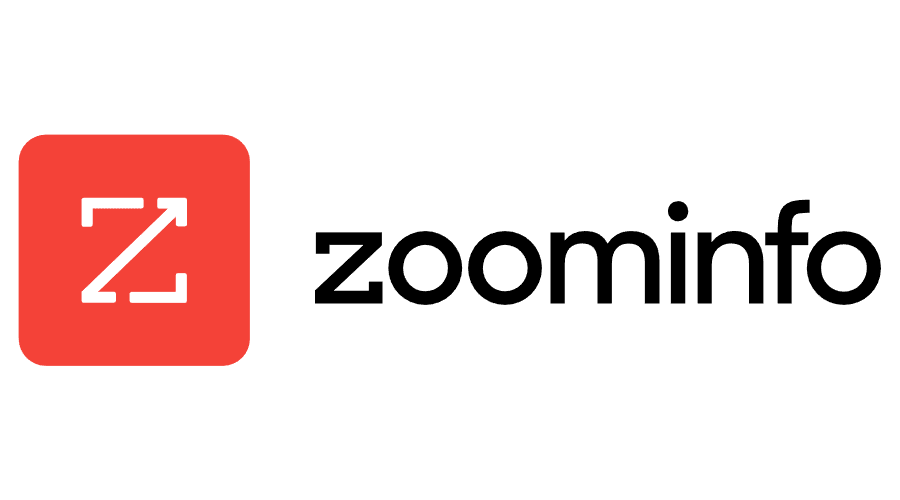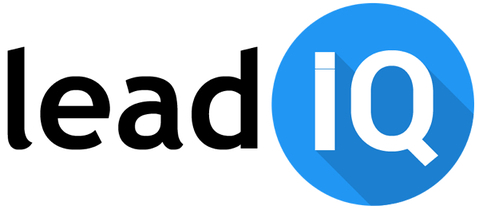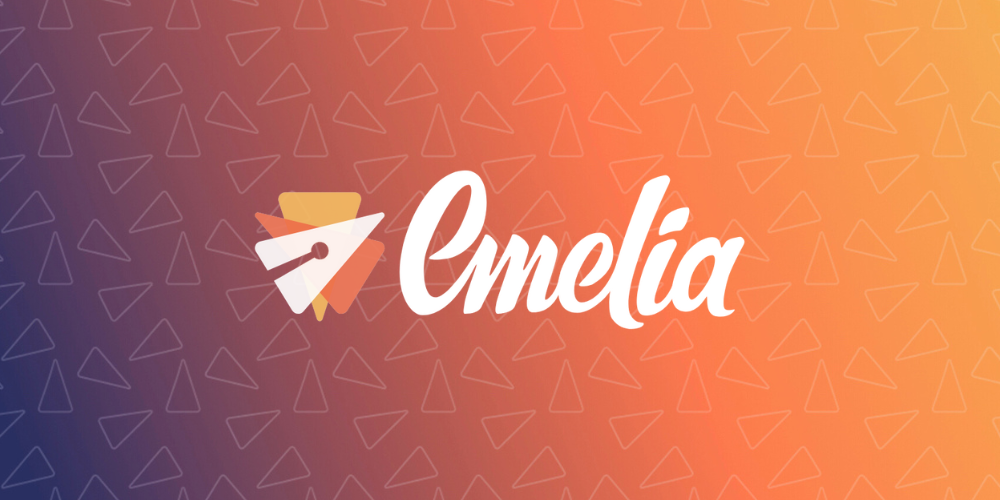
Back to hub
Blog
Software
B2B Prospecting
ZoomInfo vs. LeadIQ vs. Emelia: How to Choose?
Published on Apr 11, 2025Updated on Aug 1, 2025
ZoomInfo vs. LeadIQ vs. Emelia: How to Choose?
Choosing the right sales intelligence platform is a game-changer for sales teams and sales and marketing teams looking to streamline their sales processes, uncover high-quality leads, and boost revenue. With countless options vying for attention, three tools rise above the noise: ZoomInfo, LeadIQ, and Emelia.io. Each brings distinct strengths—like comprehensive data coverage, lead capture, or budget-friendly custom pricing—but they’re not without their flaws. In this in-depth, 2800+ word comprehensive comparison, we’ll unpack their key features, spotlight the cons of ZoomInfo and LeadIQ as requested, and weigh them against Emelia.io for a balanced view. By the end, you’ll have a clear path to pick the tool that matches your sales strategies, budget, and business size—whether you’re a large enterprise or a smaller business.
The Stakes of Choosing a Sales Intelligence Tool
In today’s cutthroat market, data-driven tools are the backbone of effective outbound prospecting and lead management. A robust sales engagement platform delivers valuable insights—think company data, contact databases, and intent signals—to help teams personalize outreach efforts and close deals faster. But here’s the catch: pick the wrong tool, and you’re stuck with wasted resources, a steep learning curve, or spotty data accuracy. That’s why we’re diving deep into ZoomInfo vs. LeadIQ and their emerging rival, Emelia.io. We’ll explore what makes each tick—from vast databases to CRM integrations—and call out the drawbacks, like pricing ZoomInfo complexities or LeadIQ’s limits for complex sales processes. Ready to find the perfect fit for your tech stack? Let’s break it down.
Meet the Players
ZoomInfo: A titan in company intelligence, ZoomInfo offers an extensive database brimming with high-quality data, perfect for large enterprises chasing high-intent leads. With advanced filtering options and
seamless integration into CRM systems, it’s a powerhouse—but its steep learning curve and billed annually plans might daunt some.
LeadIQ: Built for speed, LeadIQ excels at lead capture and outbound prospecting, featuring a Chrome extension to snag lead data from LinkedIn profiles. It’s a go-to for teams needing to qualify leads quickly, though its data coverage may fall short for in-depth market research.
Emelia.io: The budget-friendly upstart, Emelia.io blends web scraping and data enrichment into a user-friendly interface, ideal for smaller businesses seeking actionable data without breaking the bank.
What’s Next?
In this article, we’ll dissect their pricing plans, integration capabilities, and real-world performance—focusing extra attention on ZoomInfo and LeadIQ’s pitfalls—while giving Emelia.io a fair shake. Expect a no-fluff guide with actionable advice to supercharge your sales efforts.
ZoomInfo: The Enterprise Heavyweight

ZoomInfo has long been a dominant player in the sales intelligence arena, renowned for its vast database and advanced features. It’s a favorite among large enterprises and sales teams that require comprehensive market insights. However, its strengths are tempered by significant limitations that can deter certain users.
Features
ZoomInfo offers a robust suite of tools designed to empower sales and marketing teams:
Massive Database: With over 300 million professional profiles and 100 million company records, ZoomInfo provides one of the largest repositories of business data available.
Advanced Search and Filtering: Users can drill down to specific contacts or companies using detailed filters like job title, industry, revenue, and location.
Integrations: Seamless connectivity with CRMs like Salesforce, HubSpot, and Microsoft Dynamics enhances workflow efficiency.
Company Intelligence: In-depth company profiles include organizational charts, technographic data (technology stack insights), and intent data (signals of buying interest).
Automation Tools: Features like conversation intelligence and predictive analytics help refine sales strategies.
Pros
Unmatched Data Coverage: Ideal for enterprises needing access to a broad spectrum of industries and regions, particularly in North America.
Powerful Integrations: Syncing with existing systems saves time and boosts productivity.
Advanced Capabilities: Intent data and technographics give users a competitive edge in targeting high-potential leads.
Click here to compare other alternatives to Zoom Info!
Cons
ZoomInfo’s reputation isn’t without blemishes. Here’s an in-depth look at its drawbacks, based on user feedback, reviews, and industry analysis:
Prohibitive Pricing ZoomInfo’s cost is a major sticking point. The Professional Plan starts at $14,995 per year, with higher-tier plans like the Advanced and Elite packages climbing even further (often exceeding $20,000-$30,000 annually depending on customization). This pricing structure locks out small businesses and startups, making it viable only for well-funded enterprises. Additionally, hidden fees for add-ons like extra credits or premium features can inflate costs unexpectedly.
Steep Learning Curve The platform’s complexity is a frequent complaint. New users often find the interface overwhelming, with a multitude of features and filters that require extensive training to master. For teams without dedicated onboarding resources, this can lead to underutilization and frustration.
Data Accuracy Issues While ZoomInfo boasts a massive database, its accuracy isn’t infallible. Users report outdated or incorrect contact information, such as wrong email addresses or phone numbers, particularly for smaller companies or regions outside North America and Western Europe. This can result in wasted outreach efforts and lower campaign ROI.
Limited Global Reach ZoomInfo’s data strength lies predominantly in North America. In regions like EMEA (Europe, Middle East, Africa) or APAC (Asia-Pacific), coverage thins out, and accuracy declines. Businesses with international ambitions may find this a significant limitation.
Rigid Contracts ZoomInfo locks users into annual contracts with little flexibility. Cancellation or scaling down mid-term is challenging, and unused credits often don’t roll over, adding to the financial burden for teams with fluctuating needs.
Customer Support Complaints Some users cite slow response times and unhelpful support, especially when addressing billing disputes or technical issues. For a premium-priced tool, this lack of responsiveness can feel like a letdown.
Who It’s For
ZoomInfo shines for large enterprises with deep pockets and complex sales needs. Its depth of data and advanced features make it a powerhouse for teams that can afford the investment and dedicate resources to mastering it.
LeadIQ: The Streamlined Prospector

LeadIQ takes a different approach, focusing on simplicity and efficiency in lead generation. It’s a popular choice for small to medium-sized businesses (SMBs) that prioritize ease of use and LinkedIn integration. However, it too has notable shortcomings that warrant scrutiny.
Features
LeadIQ is designed to streamline prospecting with a lean but effective feature set:
LinkedIn Integration: A Chrome extension allows users to capture leads directly from LinkedIn profiles or Sales Navigator.
Real-Time Data Verification: Checks contact data as it’s collected to minimize inaccuracies.
CRM Integration: Syncs with tools like Salesforce, HubSpot, and Outreach for seamless workflows.
AI Email Writer: Automates email drafting to accelerate outreach.
Pros
User-Friendly Design: LeadIQ’s intuitive interface requires minimal training, making it accessible for small teams or solo users.
Affordable Entry Point: Pricing starts at $39 per user per month (billed annually), a fraction of ZoomInfo’s cost.
Real-Time Focus: Verification at the point of capture helps reduce bounce rates compared to static databases.
Cons
LeadIQ’s simplicity comes at a cost. Here’s a detailed examination of its weaknesses:
Limited Feature Set
Unlike ZoomInfo, LeadIQ lacks advanced capabilities like intent data, technographics, or predictive analytics. This makes it less suitable for teams needing deep market insights or complex workflows, limiting its appeal to basic prospecting tasks.
Smaller Database
With a database of approximately 49 million contacts, LeadIQ pales in comparison to ZoomInfo’s scale. This smaller pool can restrict lead options, especially for niche industries or large-scale campaigns.
Data Accuracy Concerns
Despite its real-time verification, inaccuracies persist. Users frequently report outdated phone numbers or emails, particularly for less active LinkedIn profiles. This undermines its promise of reliability and can frustrate sales reps relying on clean data.
Regional Limitations
Like ZoomInfo, LeadIQ’s data is strongest in North America and Western Europe. Its reliance on LinkedIn means coverage weakens in regions where the platform is less prevalent, such as parts of Asia or Latin America.
Credit-Based Restrictions
LeadIQ operates on a credit system, even in paid plans. The free tier offers just 10 credits per month, while paid plans ($39-$79/user/month) cap credits at 250-500, with additional credits costing extra. High-volume users may find this restrictive and expensive over time.
Over-Reliance on LinkedIn
LeadIQ’s functionality is tied closely to LinkedIn. Without a Sales Navigator subscription (an additional $99/month), its capabilities are curtailed, adding hidden costs and reducing flexibility for users who prefer other sourcing methods.
Basic Automation
While the AI email writer is handy, LeadIQ’s automation features are rudimentary compared to competitors. Teams needing robust campaign management may need to pair it with additional tools, negating some of its cost advantage.
Who It’s For
LeadIQ suits SMBs or individual sales reps who need a straightforward, affordable tool for LinkedIn-focused prospecting. It’s less ideal for teams requiring advanced analytics or broad market coverage.
Emelia.io: The Affordable All-Rounder

Emelia.io is a newer entrant, positioning itself as a cost-effective, user-friendly alternative to ZoomInfo and LeadIQ. With a focus on real-time data and automation, it’s gaining traction among budget-conscious teams seeking flexibility.
Features
Emelia.io combines modern tools with affordability:
Unlimited Real-Time LinkedIn Scraping: Available in all plans, starting at €37/month.
99% Accurate Email Finding: A separate credit system ($19 for 1,000 credits) ensures high-quality email data.
Multi-Channel Automation: Orchestrates LinkedIn and email campaigns with AI-driven personalization.
Email Warmup and Verifier: Boosts deliverability by warming up domains and verifying lists.
Magic Writer: An AI tool that crafts tailored outreach messages.
Pros
Cost-Effective Pricing: At $37/month for unlimited scraping, it undercuts both ZoomInfo and LeadIQ significantly.
Real-Time Data: Scraping LinkedIn in real-time ensures fresher leads than static databases.
Ease of Use: A clean, intuitive interface appeals to beginners and seasoned users alike.
Global Reliability: Leveraging LinkedIn’s global reach, it offers consistent data across regions.
Flexible Credits: Credits for email/phone finding don’t expire, adding value for sporadic users.
Cons
LinkedIn Dependency: Optimal performance requires LinkedIn Sales Navigator, mirroring LeadIQ’s limitation.
Smaller Database Scope: Relies on LinkedIn data, which may miss contacts not active on the platform or in niche sectors.
Emerging Status: As a newer tool, it lacks the extensive integrations and brand recognition of its rivals.
Who It’s For
Emelia.io is perfect for startups, freelancers, or small teams needing affordable, real-time data and automation without the complexity or cost of enterprise-grade tools.
Head-to-Head Comparison
To distill the differences, here’s a side-by-side look at key metrics:
Aspect | ZoomInfo | LeadIQ | Emelia.io |
|---|---|---|---|
Database Size | 300M+ profiles | 49M+ profiles | LinkedIn-based |
Pricing | $14,995/year+ | $39/user/month+ | $37/month+ |
Real-Time Data | No | Partial | Yes |
Ease of Use | Complex | Easy | Easy |
Global Coverage | Strong NA, weaker elsewhere | Strong NA, weaker elsewhere | Reliable globally |
Automation | Advanced | Basic | Advanced |
Unique Features | Intent data, technographics | LinkedIn Chrome extension | Magic Writer, email warmup |
Key Takeaways
ZoomInfo excels in depth and scale but at a steep cost and complexity.
LeadIQ offers simplicity and affordability but lacks breadth and advanced tools.
Emelia.io balances cost, usability, and real-time data, though it’s tied to LinkedIn.
How to Choose the Right Tool
Selecting between ZoomInfo, LeadIQ, and Emelia.io hinges on your business’s unique needs. Here’s a decision framework based on critical factors:
1. Budget
High Budget: ZoomInfo’s premium pricing suits enterprises with significant resources.
Moderate Budget: LeadIQ provides a middle ground for SMBs willing to invest modestly.
Low Budget: Emelia.io’s low entry point makes it accessible to startups and cost-conscious teams.
2. Team Size and Complexity
Large Teams: ZoomInfo’s robust features support complex, multi-user workflows.
Small Teams: LeadIQ and Emelia.io cater to leaner operations with simpler needs.
3. Data Requirements
Broad, Static Data: ZoomInfo’s massive database is unmatched for comprehensive insights.
LinkedIn-Focused, Real-Time Data: LeadIQ and Emelia.io shine for fresh, platform-specific leads.
4. Regional Focus
North America: All three perform well, with ZoomInfo leading in depth.
Global Reach: Emelia.io’s LinkedIn reliance gives it an edge in diverse markets.
5. Feature Needs
Advanced Analytics: ZoomInfo’s intent and technographic data are top-tier.
Basic Prospecting: LeadIQ keeps it simple and effective.
Automation: Emelia.io offers multi-channel tools at a fraction of the cost.
Scenarios
Enterprise with Deep Pockets: Choose ZoomInfo for its scale and sophistication, despite its cons.
SMB with LinkedIn Focus: LeadIQ is a solid pick for quick, affordable prospecting.
Startup Needing Flexibility: Emelia.io delivers value, fresh data, and automation on a budget.
Conclusion
ZoomInfo, LeadIQ, and Emelia.io each bring something valuable to the table, but their cons—particularly ZoomInfo’s high cost and complexity, and LeadIQ’s limited scope and accuracy issues—can’t be ignored. ZoomInfo is the heavyweight champion for enterprises, LeadIQ the scrappy contender for SMBs, and Emelia.io the agile upstart for budget-savvy teams.To choose wisely, weigh your budget, team size, and data needs against each tool’s strengths and weaknesses. If enterprise-grade power justifies the expense, ZoomInfo is your match. If simplicity and LinkedIn integration are priorities, LeadIQ fits the bill. For affordable, real-time versatility, Emelia.io stands out as a compelling option.Ready to take the next step? Explore these tools firsthand:
Visit ZoomInfo for a demo.
Test LeadIQ with its free tier.
Try Emelia.io to experience real-time scraping and AI-driven outreach.
Your sales success starts with the right tool—choose the one that aligns with your vision and resources.

Clear, transparent prices without hidden fees
No commitment, prices to help you increase your prospecting.
Credits
May use it for :
Find Emails
AI Action
Phone Finder
Verify Emails
€19per month
1,000
5,000
10,000
50,000
100,000
1,000 Emails found
1,000 AI Actions
20 Number
4,000 Verify
€19per month
Discover other articles that might interest you !
See all articlesBlog
Published on Oct 24, 2025
5 contract management tools that will help your legal team keep their cool in 2025
 Niels Co-founder
Niels Co-founderRead more
Blog
Published on May 17, 2025
Mastering Competitive Analysis: Best Practices & Practical Steps
 Mathieu Co-founder
Mathieu Co-founderRead more
Tips and training
Published on Dec 5, 2022
Few things to avoid in your campaigns
 Niels Co-founder
Niels Co-founderRead more
LinkedIn
Published on Sep 2, 2025
LinkedIn and Beyond: Discover 6 Alternatives to Dripify
 Mathieu Co-founder
Mathieu Co-founderRead more
Software
Published on Nov 5, 2025
4 Translation Management Systems That Actually Make Global Expansion Easy (Not Overwhelming)
 Niels Co-founder
Niels Co-founderRead more
Sales
Published on Jul 14, 2025
Gross Sales vs Net Sales: the Key Differences You Need to Know
 Niels Co-founder
Niels Co-founderRead more
Made with ❤ for Growth Marketers by Growth Marketers
Copyright © 2025 Emelia All Rights Reserved
